Charger Xtar VC4S

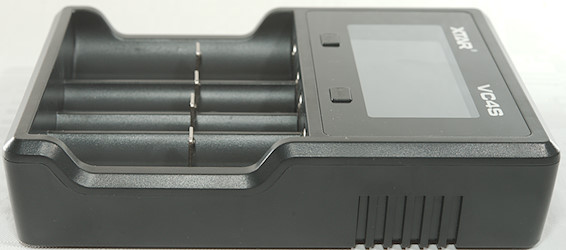
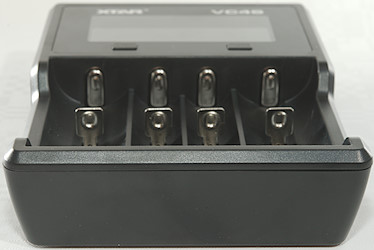
The is a automatic charger for LiIon and NiMH batteries, it also has a test function and a store function. The automatic part means battery chemistry and charge current is selected automatically, user cannot affect them.


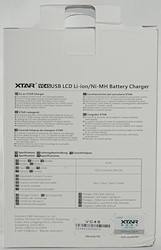

I got the charger in a white cardboard box with the specifications printed on it.

Inside the box is a fabric bag with the charger in, this bag can be useful for traveling and to keep the manual, charger and cable together.
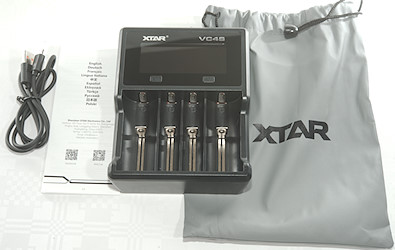
The bag contained the charger, a USB cable, a warranty card and a instruction sheet in many languages.

The charger is USB powered, it can work with either regular USB or a Quick Charge supply, I will recommend using a QC supply.
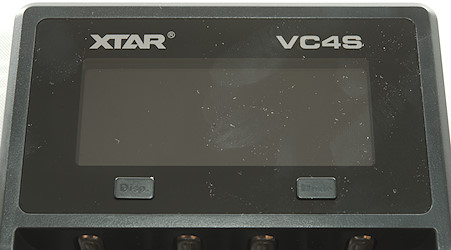
There is a display, some red/green indicators (Not visible on the picture) and two buttons. One button to select display function (Show Capacity, current, IR) and the other to select mode (Charge, Grade, Store).
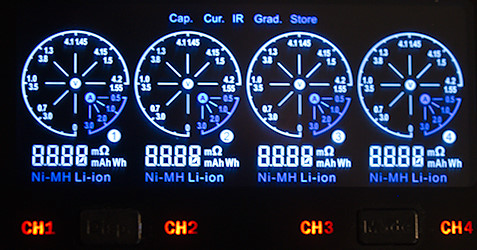
During power on all the segments is shown.
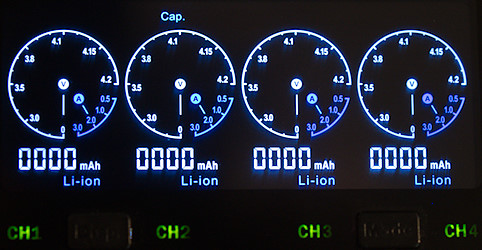
Charger ready with no batteries in it.
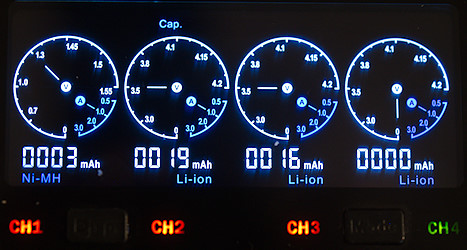
Charging one NiMH and two LiIon batteries.
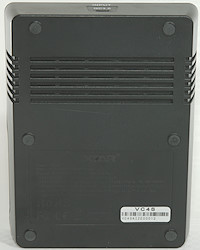
The specifications on the back of the charger is nearly unreadable
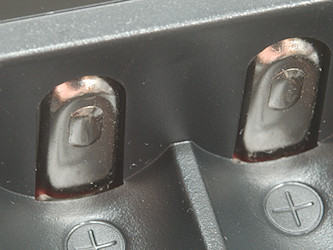
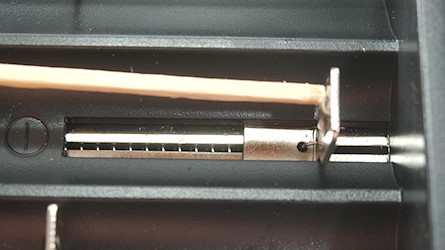
The charger uses the sliding connections style and will work with batteries from 30mm to 70.3 mm long, i.e. protected 20700 will not fit and a few very long protection 18650 may also have problems.


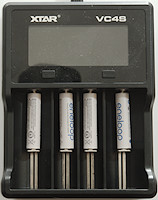
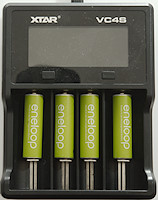
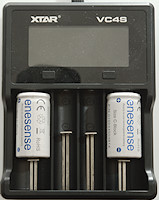
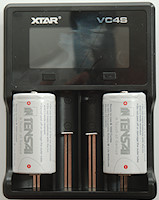
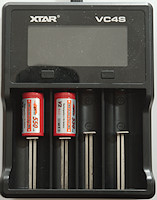
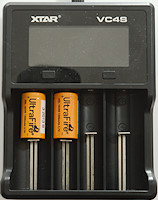
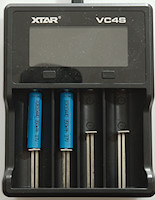
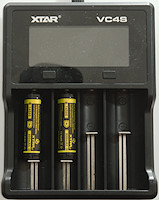
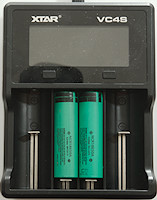
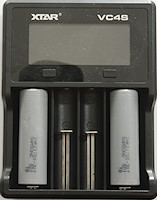
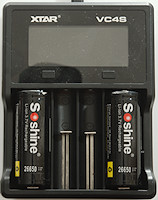
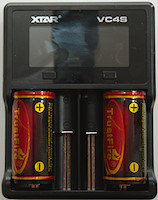
The charger can handle 70 mm long batteries, including flat top cells.
Measurements charger
- Charger uses QC2 at 9V and may draw 2A, i.e. 18 Watt, when idle it only uses 5V
- Power consumption when idle is about 200mA at 5V with display at high, 64mA with display at low and 47mA with display off.
- When charging the last digit in the capacity displays will flash.
- At 0V the charger will report "Err".
- Above 0V the charger will guess NiMH and start charging, this guess may be changed to LiIon if the battery voltage reaches LiIon levels.
- Below 1.8V the charger assumes NiMH.
- Above 1.8V the charger assumes LiIon.
- Below 3.0V charger will only charge LiIon with 0.3A, but display may show 3A.
- When charge is finished the charger will charge with 0.1mA.
- Charger will restart if voltage drops to 3.9 volt.
- Charge will restart charging after power loss, or battery insertion.
- When not connected to power it will drain about 1mA from a LiIon and 0.1A from a NiMH battery.
- Current dial will show maximum possible charge current, not actual charge current use "Cur" display for that.
- mAh display flashes "Full" when the corresponding battery is full and the LED is green.
Charging LiIon regular USB
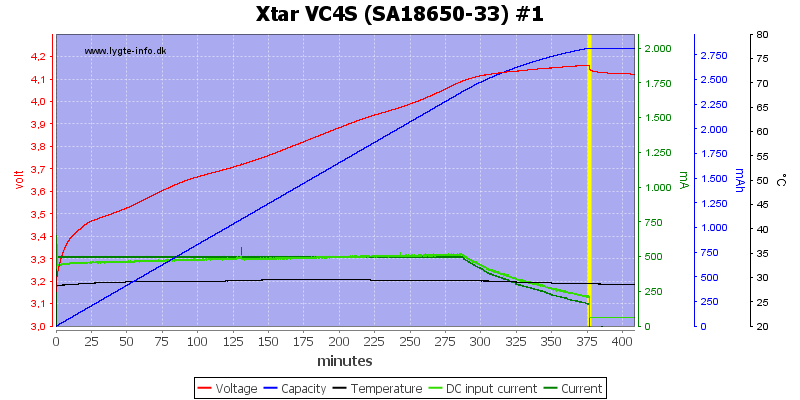



Charging a LiIon battery from regular USB will limit the current, here it is 0.5A for all four slots with a nice CC/CV charge curve and about 150mA termination current.
Display shows for slot #1: 2829mAh 180mOhm
Display shows for slot #2: 3196mAh 0mOhm
Display shows for slot #3: 2910mAh 101mOhm
Display shows for slot #4: 2960mAh 181mOhm
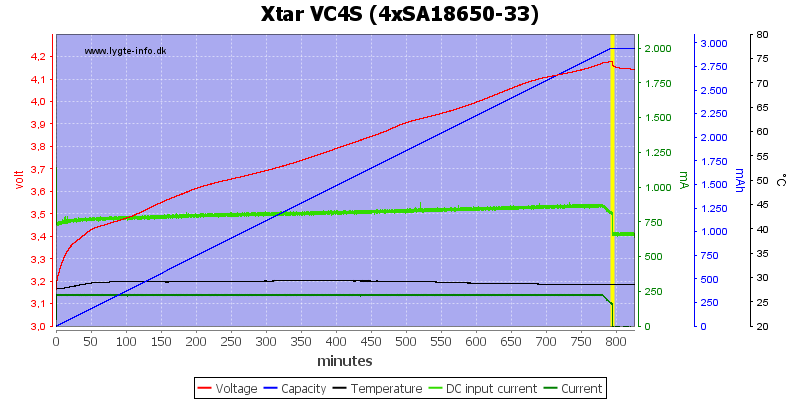
With four batteries the current dropped to 250mA, this means a very long charge time.
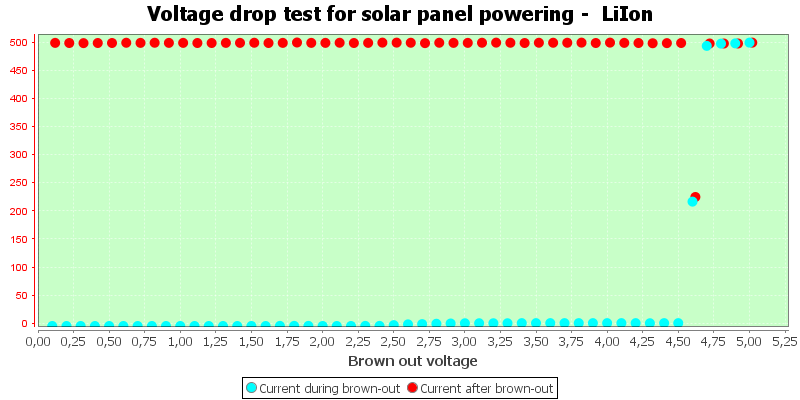
It did handle the test for unstable supply fairly well, except it stayed at low current in one case.
Charging LiIon from Quick Charge
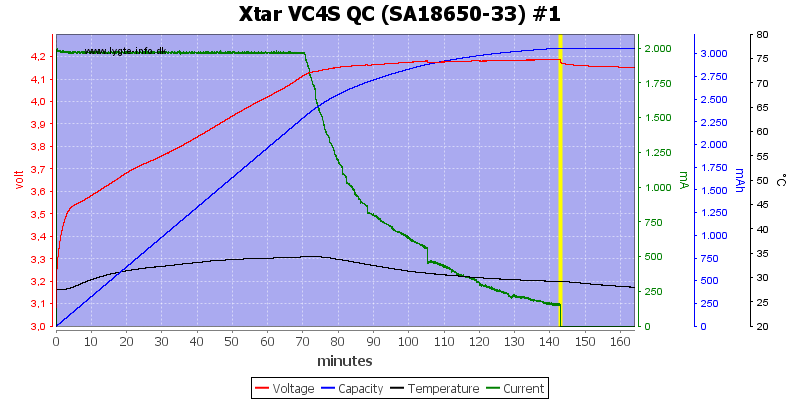
With more voltage and power available the charge current is much higher, here 2A is used with a nice CC/CV charge curve and 150mA termination. Batteries are only rated for a standard charge current of 1.7A.
Display shows: 3125mAh 55mOhm
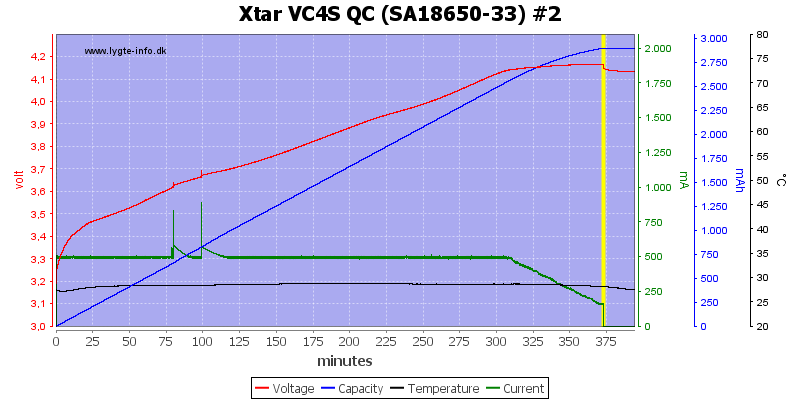
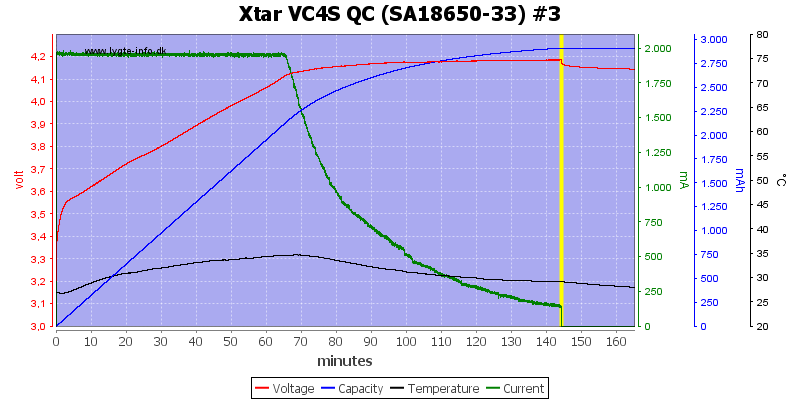
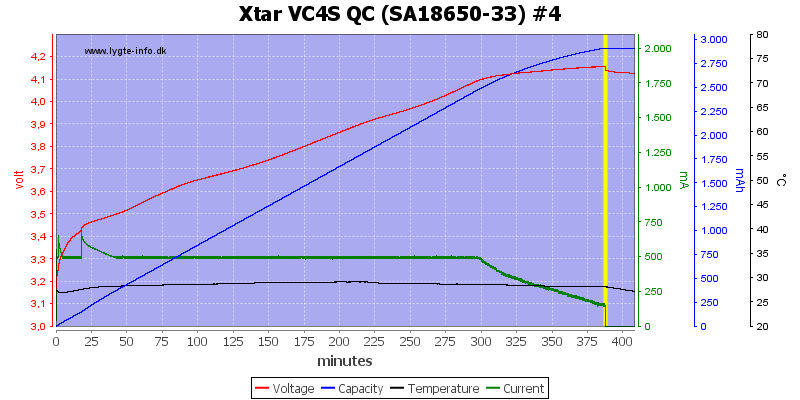
The charge current varies between the slots, this also means varying charge time.
Display shows for slot 2: 2919mAh 95mOhm
Display shows for slot 3: 2996mAh 59mOhm
Display shows for slot 4: 2938mAh 142mOhm
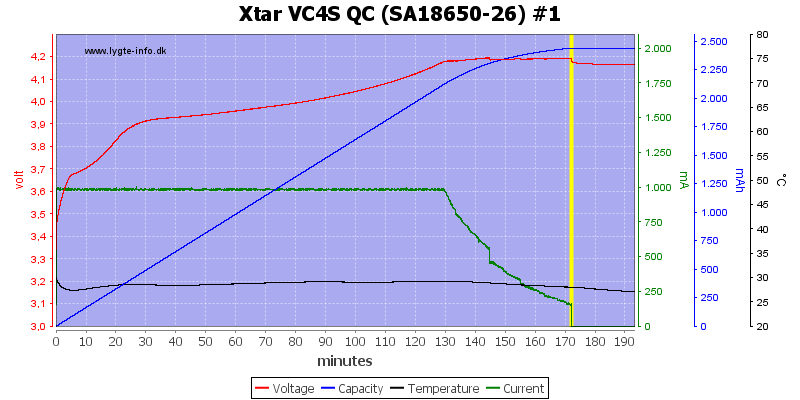
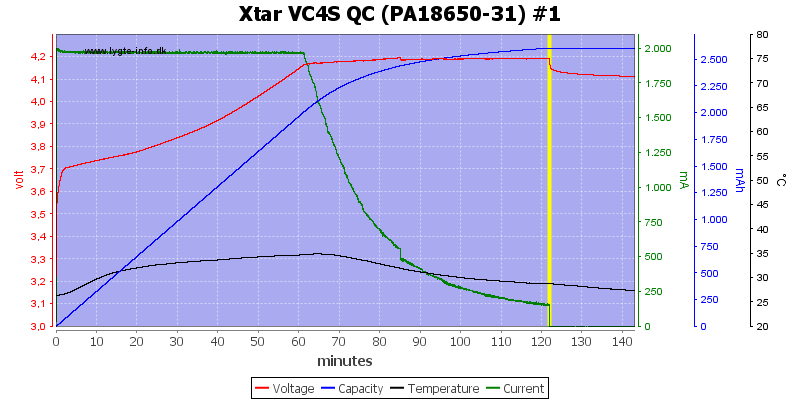
The PA cell is a bit old, but charger decided to use 2A on it.
Display shows for SA: 2499mAh 80mOhm
Display shows for PA: 2658mAh 57mOhm
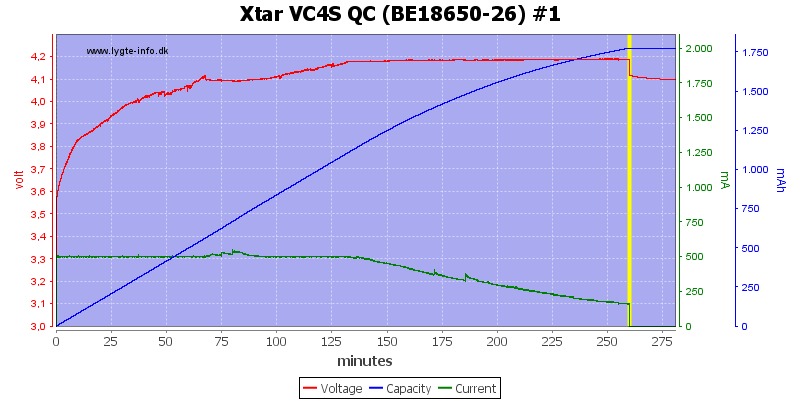
This cell is rather old and the charge current is 0.5A.
Display shows: 1788mAh 286mOhm
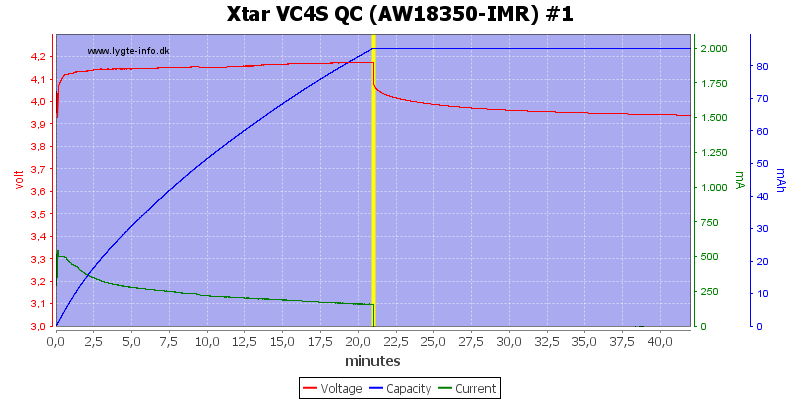
My old and worn down cell goes to CV phase very fast and the charger uses about minimum charge current, termination current is not changed.
Display shows: 88mAh 301mOhm

This smaller cell is charged at 0.5A, but due to the 150mA termination there is a significant voltage drop at the end.
Display shows: 619mAh 168mOhm
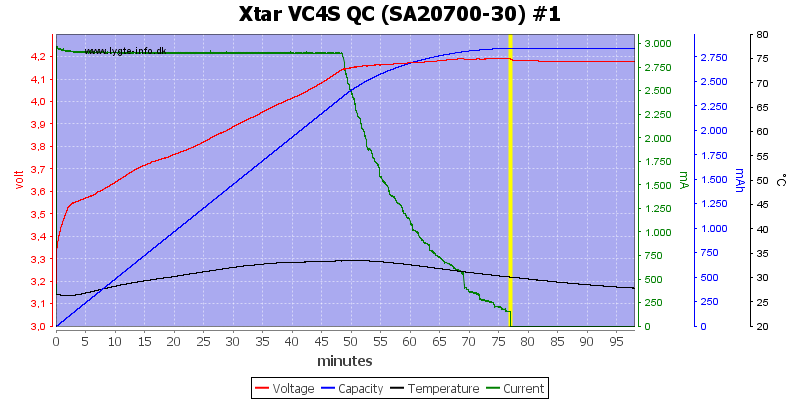
A larger high current cell is charged at 3A, this is fine.
Display shows: 2939mAh 38mOhm
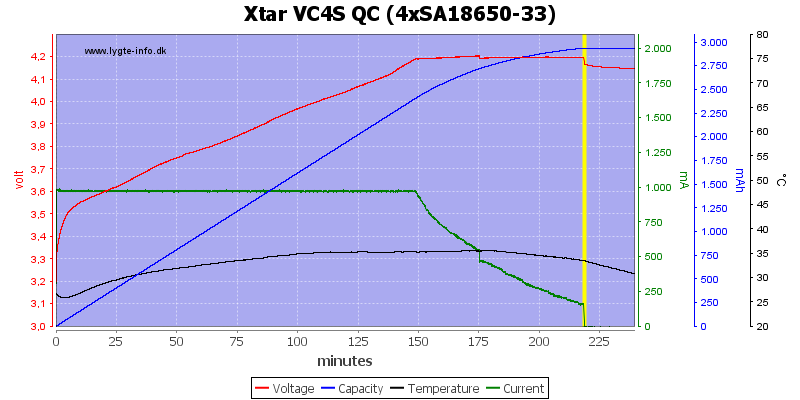
With four cells the current is 1A on each cell.
Display shows for slot 1: 3045mAh 68mOhm
Display shows for slot 2: 3114mAh 31mOhm
Display shows for slot 3: 3226mAh 32mOhm
Display shows for slot 4: 3238mAh 31mOhm
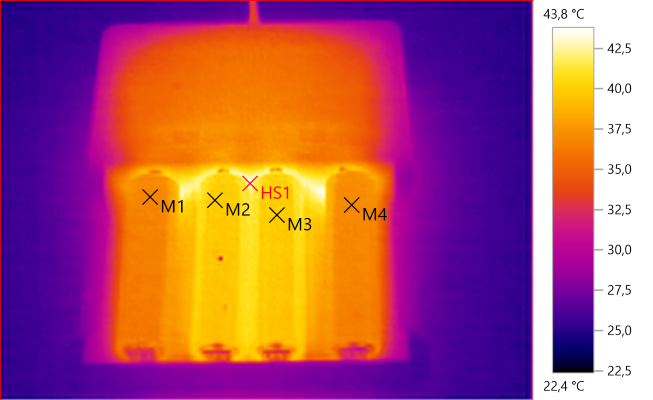
M1: 36.7°C, M2: 40.0°C, M3: 40.1°C, M4: 37.3°C, HS1: 43.8°C
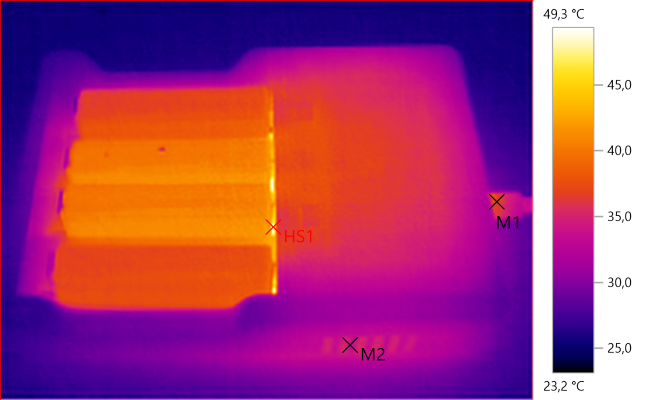
M1: 37.0°C, M2: 34.1°C, HS1: 49.3°C
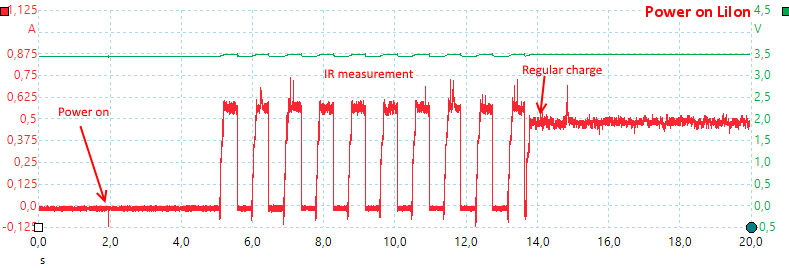
During startup it will pulse the charge current, this is probably to measure the internal resistance.
Grading LiIon
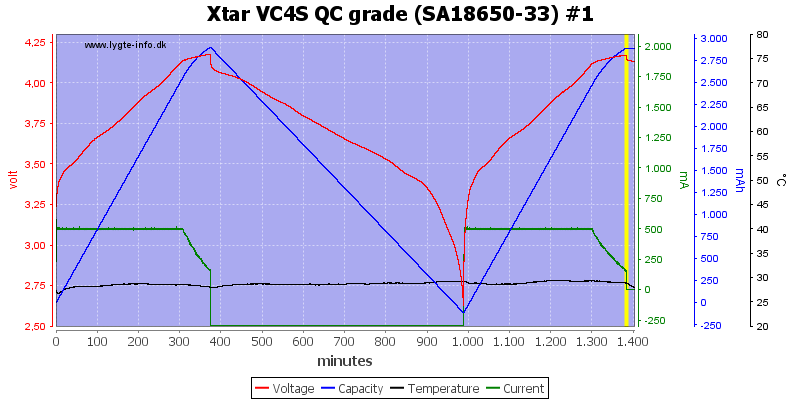
The grading function will charge the battery, then discharge it and finally charge it again, it reports the discharged capacity.
The discharge current is fairly moderate at 300mA and it discharges to around 2.65V.
Display shows: 2874mAh
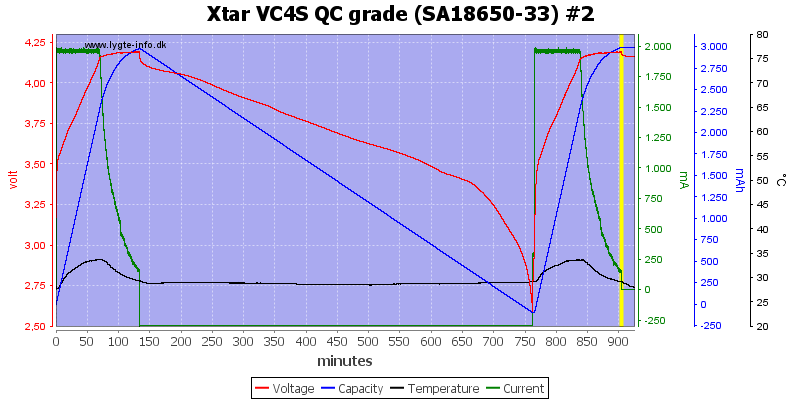
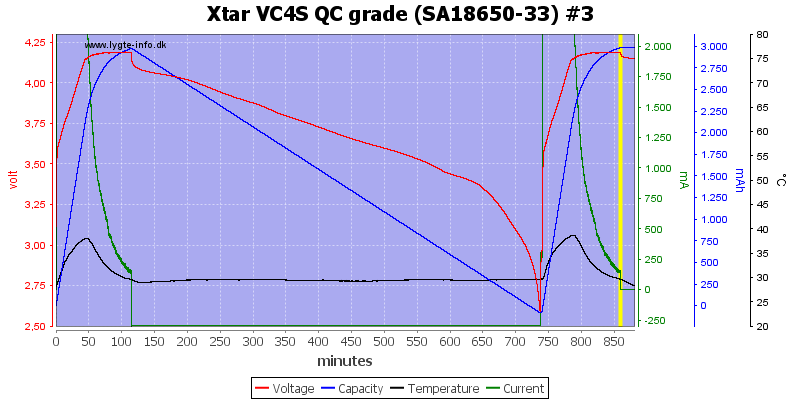
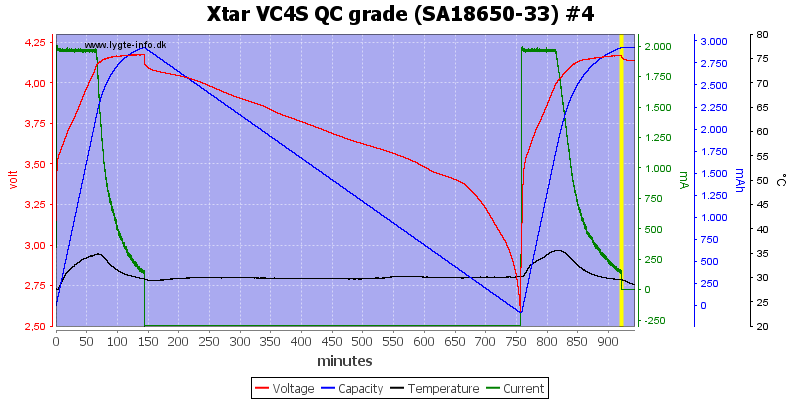
Display shows for slot 2: 2945mAh
Display shows for slot 3: 2913mAh
Display shows for slot 4: 2872mAh
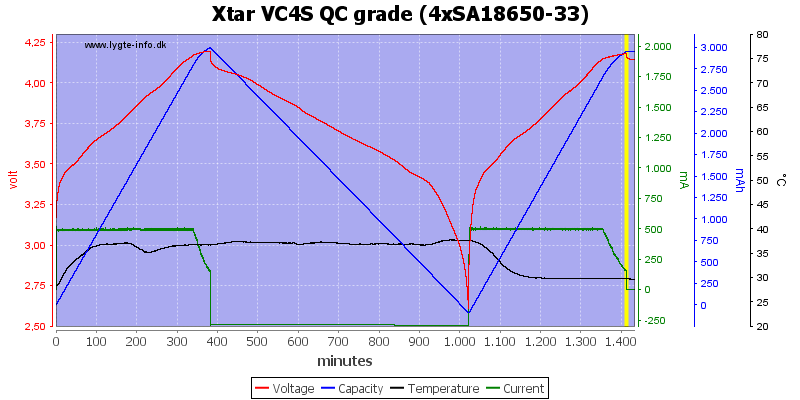
The charger can grade four at a time.
Display shows for slot 1: 2997mAh
Display shows for slot 2: 2953mAh
Display shows for slot 3: 2994mAh
Display shows for slot 4: 3038mAh
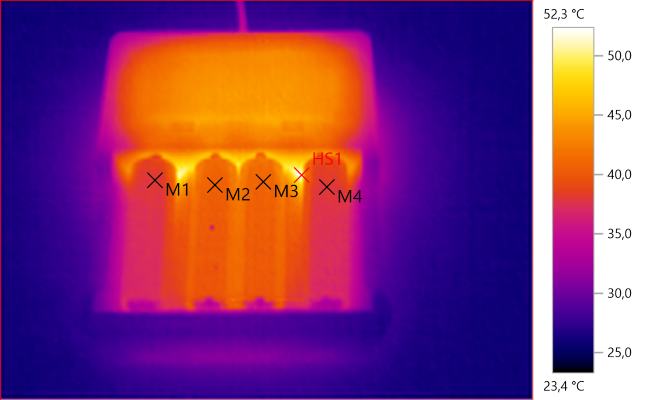
M1: 38.0°C, M2: 40.4°C, M3: 40.9°C, M4: 38.0°C, HS1: 52.3°C
There is not much heat when discharging the batteries.
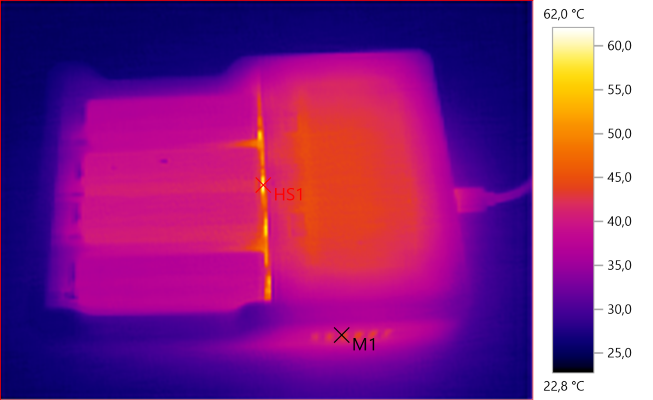
M1: 42.7°C, HS1: 62.0°C
Storing LiIon
The store function will place the batteries in a half charged state, this is the best way to maintain stored batteries (Keep them in a cool place will also extend their life).
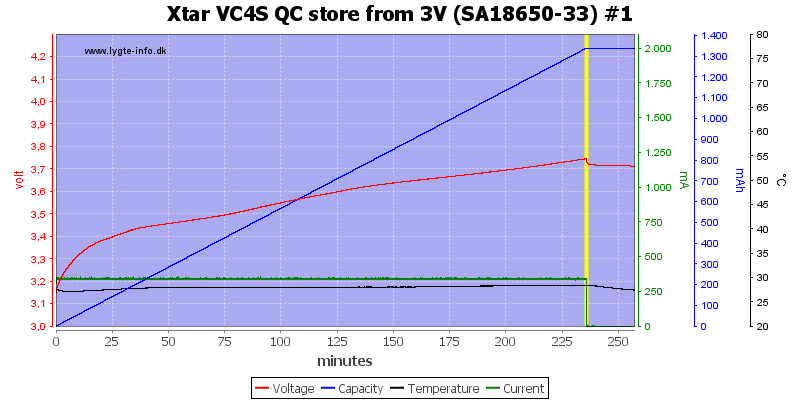
A empty battery is charged.
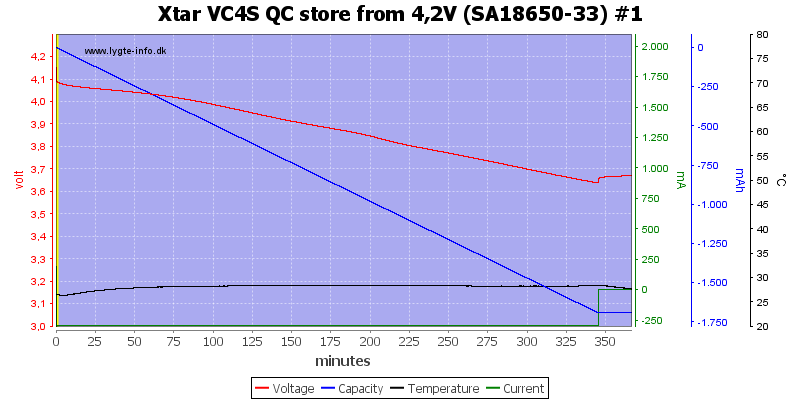
A full battery is discharged.
Charging NiMH from regular USB

This cell is charged with 1.5A and charging is stopped with a -dv/dt termination and there is no trickle charge.
Display shows: 2043mAh 55mOhm
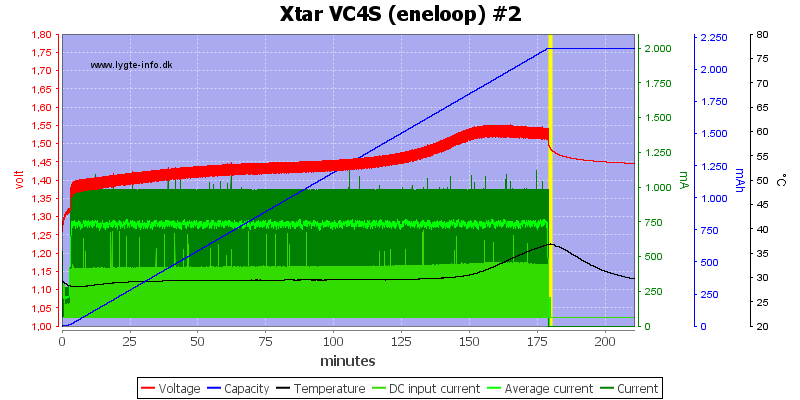
With this cell is charge current is only 0.75A
Display shows: 2224mAh 75mOhm
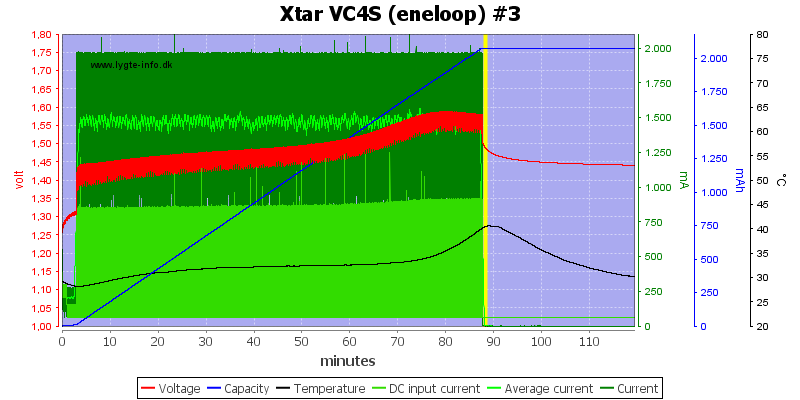
Charge current is 1.5A
Display shows: 2132mAh 60mOhm

Charge current is 0.75A.
Display shows: 2090mAh 67mOhm
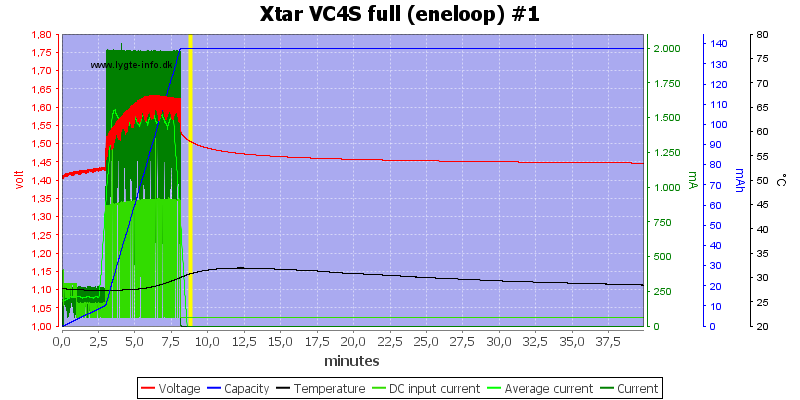
Using -dv/dt termination it takes some time to detect a full battery, but this charger do it rather fast, only 8 minutes.
It can also be seen that the first 3 minutes are done a low current, this may be to detect a over discharged LiIon battery.
Display shows: 140mAh 29mOhm
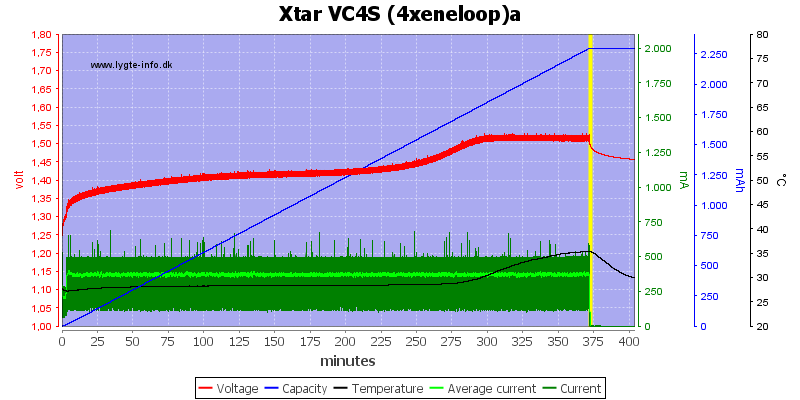
With four batteries the current is only about 350mA for each cell.
Display shows for slot 1: 2296mAh 49mOhm
Display shows for slot 2: 2186mAh 25mOhm
Display shows for slot 3: 2401mAh 28mOhm
Display shows for slot 4: 2373mAh 30mOhm

And the charger uses below 1A from USB.
Charging NiMH from Quick Charge
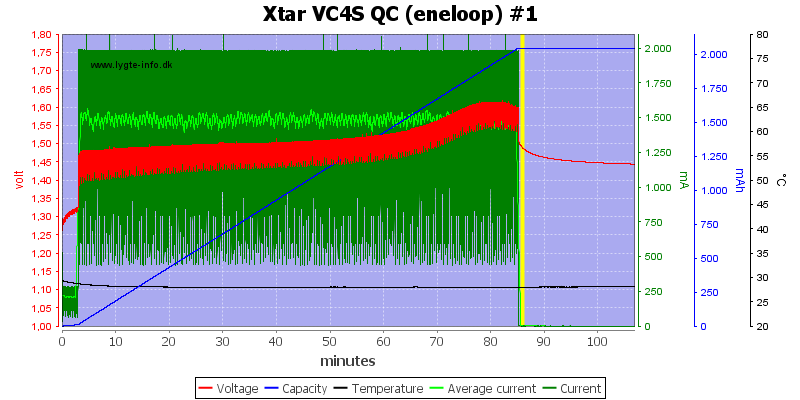
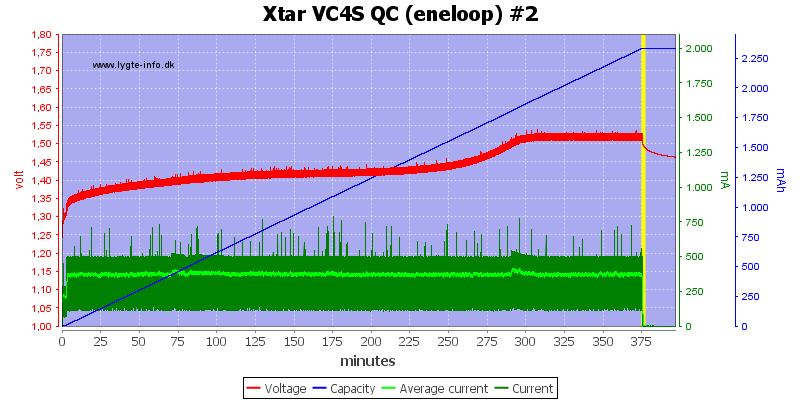
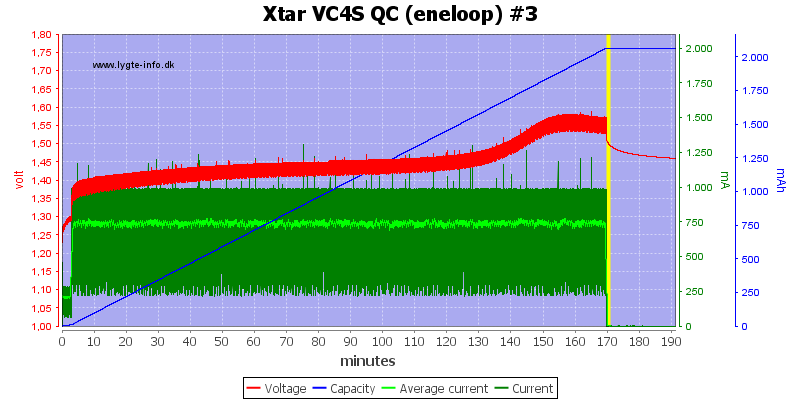
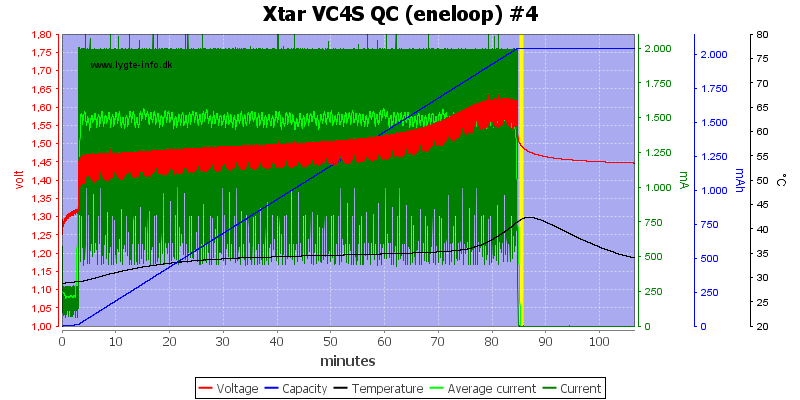
More available power did not increase the charge speed for a single NiMH battery.
Display shows for slot 1: 2073mAh 50mOhm
Display shows for slot 2: 2338mAh 94mOhm
Display shows for slot 3: 2109mAh 64mOhm
Display shows for slot 4: 2067mAh 57mOhm
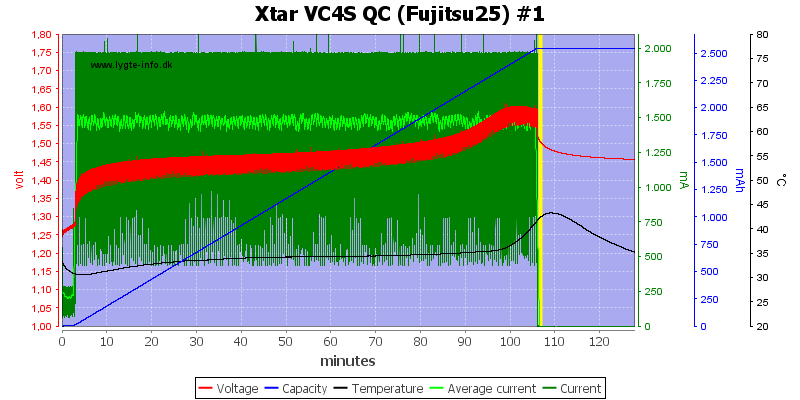
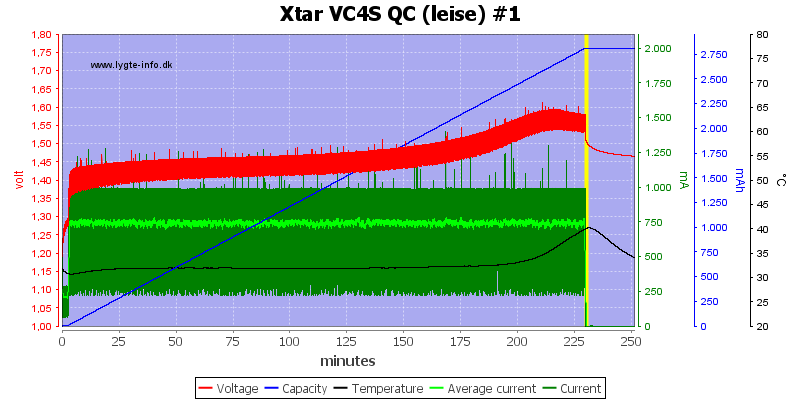
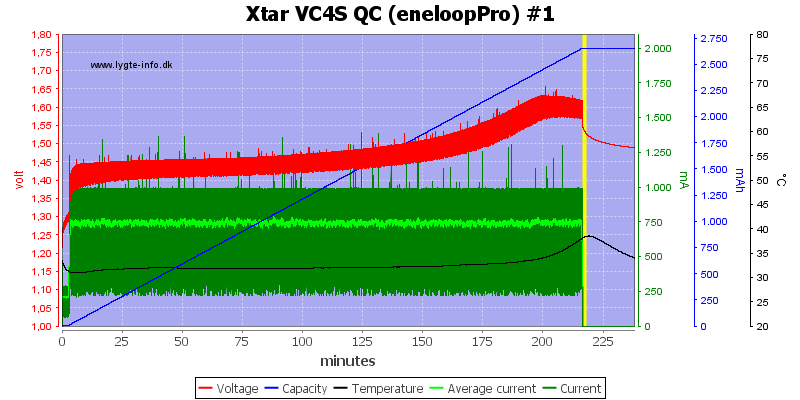
The 3 high capacity batteries are charged nicely.
Display shows for Fujitsu: 2598mAh 91mOhm
Display shows for Leise: 2862mAh 66mOhm
Display shows for Pro: 2697mAh 64mOhm
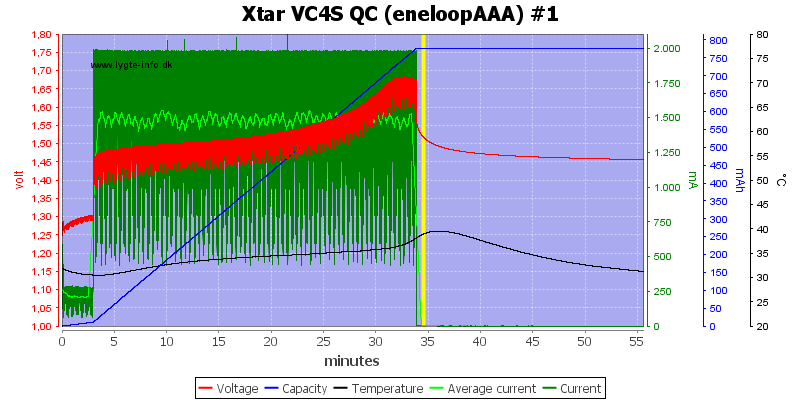
The charge current for the AAA is on the high side at 1.5A
Display shows: 785mAh 58mOhm
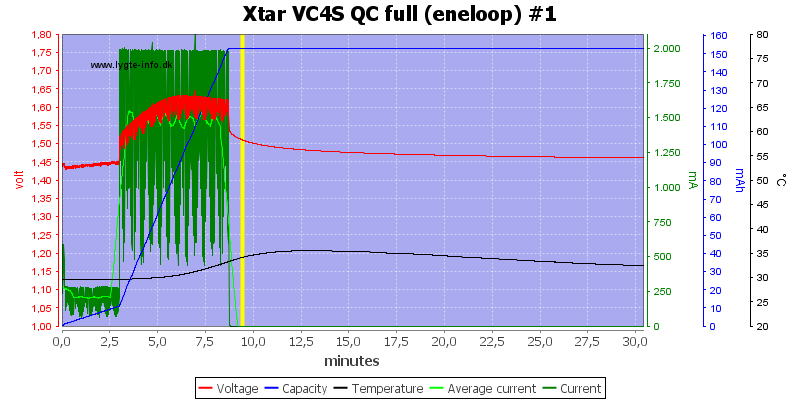
Again the full battery is detected fairly fast.
Display shows for slot 1: 154mAh 30mOhm
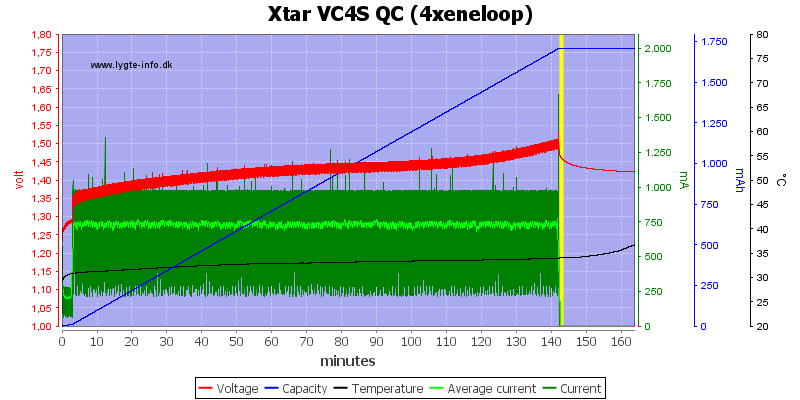
With more input power the four battery can be charged faster.
Display shows for slot 1: 1793mAh 69mOhm
Display shows for slot 2: 2153mAh 33mOhm
Display shows for slot 3: 2214mAh 28mOhm
Display shows for slot 4: 2150mAh 26mOhm
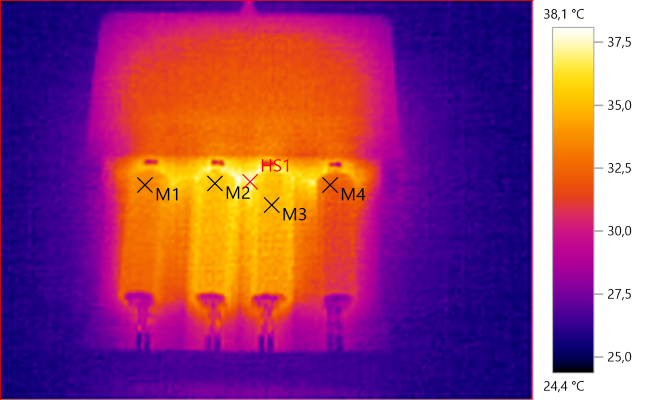
M1: 33.3°C, M2: 35.4°C, M3: 34.9°C, M4: 32.4°C, HS1: 38.1°C
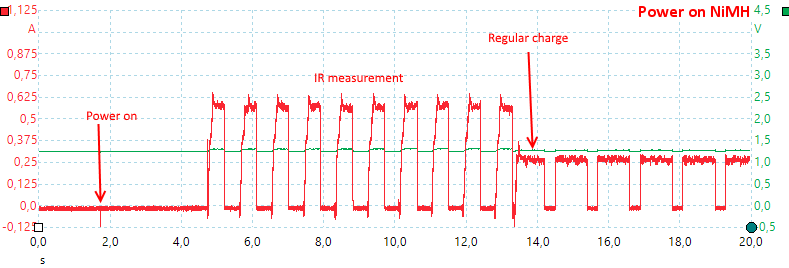
Again the charger pulses charge current at the start to measure internal resistance. during charge the current is stopped at regular intervals to check voltage.
Grading NiMH
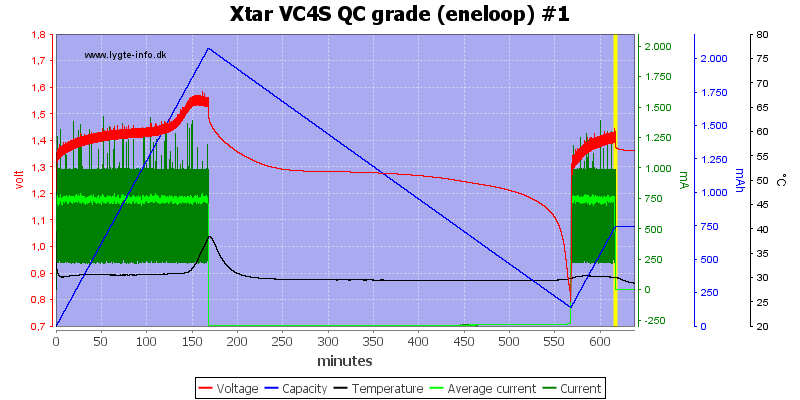
Grading NiMH works slightly different than LiIon, again the battery is charged, discharge, but then only partially charged (This must be a software bug).
Display shows: 1874mAh
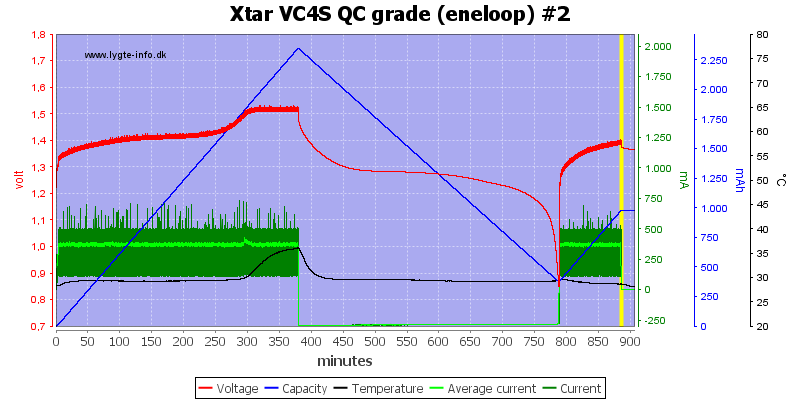
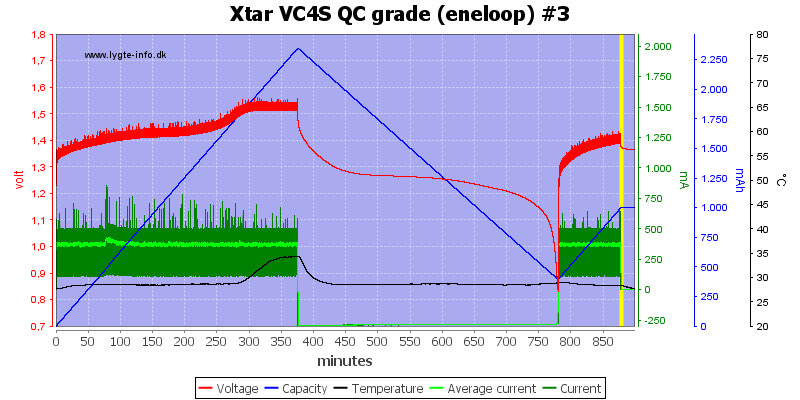

The 3 other slots are similar, the final charge varies a bit, but is between 500mAh and 1000mAh
Display shows for slot 2: 1914mAh
Display shows for slot 3: 1895mAh
Display shows for slot 4: 1857mAh
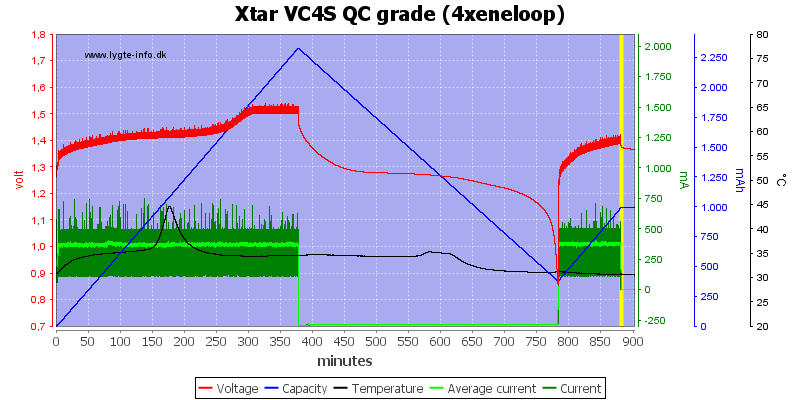
There is no problem doing four batteries at a time.
Display shows for slot 1: 1898mAh
Display shows for slot 2: 1875mAh
Display shows for slot 3: 1854mAh
Display shows for slot 4: 1872mAh
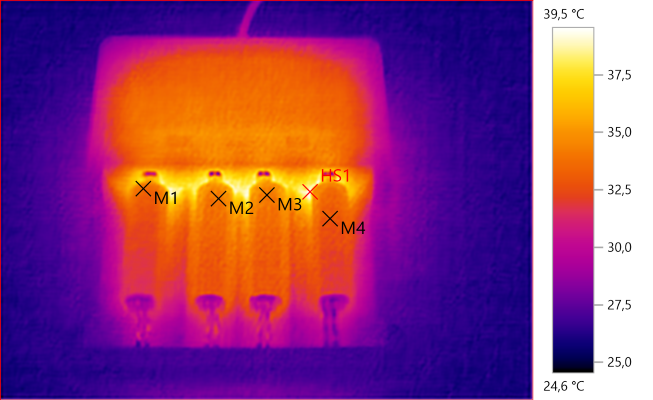
M1: 33.8°C, M2: 34.4°C, M3: 34.2°C, M4: 32.9°C, HS1: 39.5°C
Storing NiMH

An empty NiMH will not really charge anything in the store function.
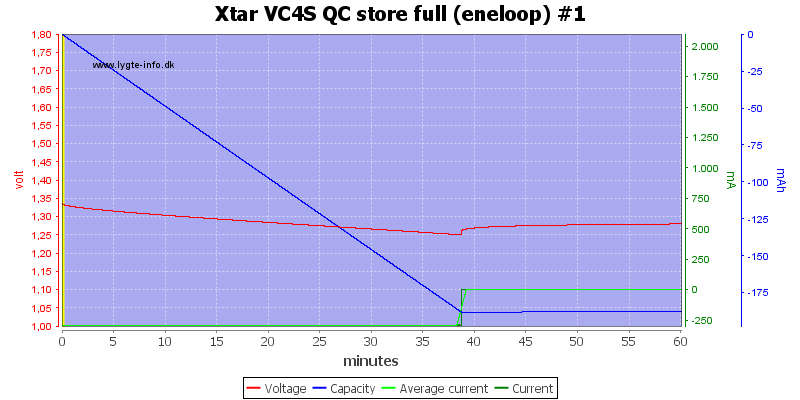
A full cell will get slightly discharged, but not much.
Internal resistance measurement
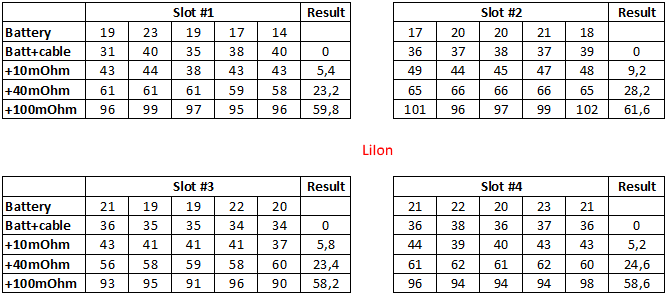
The internal resistance function gives very consistent results for LiIon, but is a bit low (I measured the battery to 35-38mOhm).
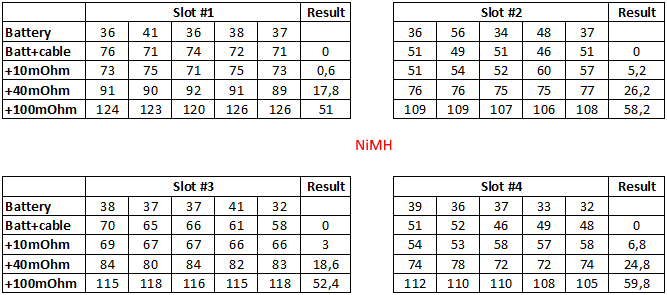
NiMH is also very consistent, but again the values are on the low side (I measured the battery to 61-69mOhm).
Conclusion
This charge do not have the usual discharge function, but instead has a "grade" that will charge, discharge and charge battery again to measure capacity and a store that will half charge a battery, it may either charge or discharge the battery to get there. The store function is for LiIon and do not really work for NiMH.
Charging and grading works well for both LiIon and NiMH (The bug is a minor annoyance).
But the automatic current for small batteries can sometimes be a problem, because the current is based on the measured internal resistance in the battery and some small batteries have a fairly low resistance without being designed for high charge current!
Xtar shows some good ideas in this charger, but the automatic current selection is not always perfect, for people that has many LiIon batteries the store function will help prolong the life of unused cells.
Notes
The charger was supplied by XTAR for a review.
Here is an explanation on how I did the above charge curves: How do I test a charger
























































































